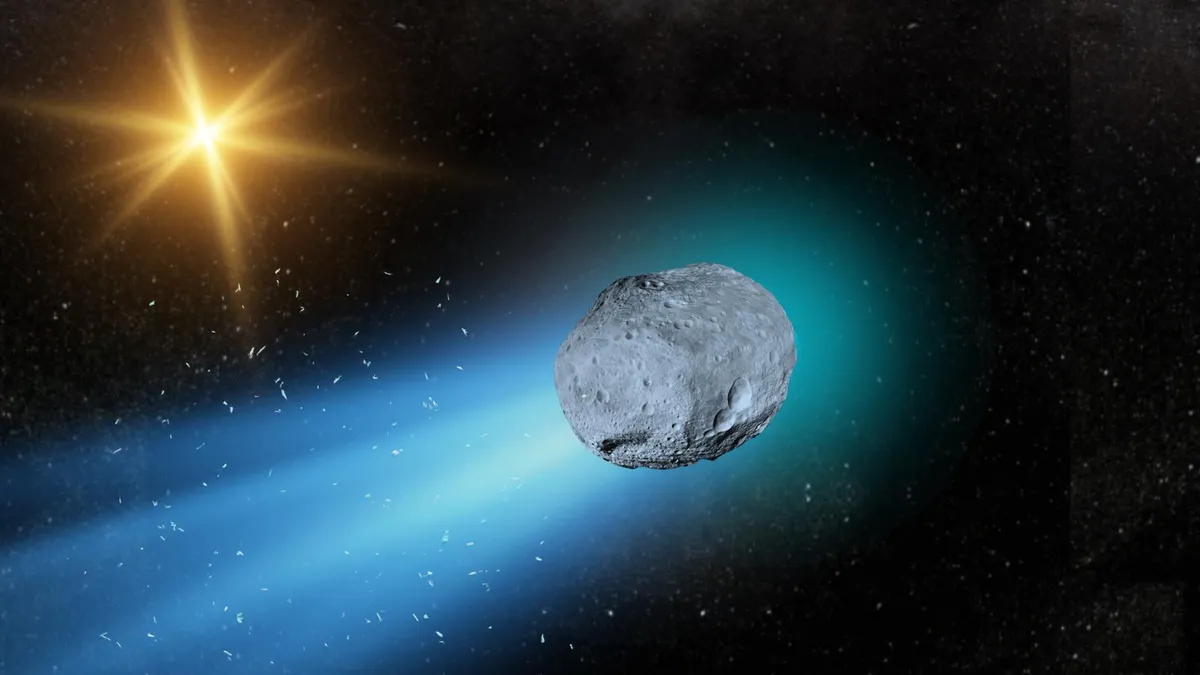
The recently discovered interstellar visitor 3I/ATLAS has captivated astronomers, as it may represent one of the oldest comets ever observed by humanity. This remarkable object is particularly significant because it is only the third known space object to enter our solar system from beyond its boundaries, following the notable discoveries of 1I/'Oumuamua in 2017 and 2I/Borisov in 2019. Recent research indicates that 3I/ATLAS could be even more extraordinary than initially thought, potentially dating back around 3 billion years older than our solar system, which formed approximately 4.5 billion years ago.
According to Matthew Hopkins, an astronomer from the University of Oxford, the 3I/ATLAS comet, discovered on July 1, 2025, by the ATLAS survey telescope, is estimated to be around 7 billion years old. Hopkins emphasizes that all known non-interstellar comets, like the famed Halley's Comet, formed concurrently with our solar system, limiting their age to a maximum of 4.5 billion years. In contrast, interstellar visitors like 3I/ATLAS may possess a significantly older lineage, and statistical analyses suggest it is very likely the oldest comet humanity has ever encountered.
The advanced age of 3I/ATLAS is attributed to its trajectory, which suggests it originates from a completely different region of the Milky Way than previous interstellar visitors. Hopkins and his colleagues theorize that the steep trajectory indicates its origin in the Milky Way's thick disk of stars, a region characterized by some of the galaxy's oldest stellar populations. This area is situated between the thinner disk of more recently formed stars and the solar system, which includes our relatively young sun.
"This is an object from a part of the galaxy we've never seen up close before," stated Chris Lintott, an astrophysicist at the University of Oxford. He added that there is a two-thirds chance that this comet is older than the solar system, suggesting it has been drifting through interstellar space for eons.
If 3I/ATLAS indeed originates from the thick stellar disk of the Milky Way and formed around an ancient star, it could have significant implications for its chemical composition. Hopkins and his team propose that this interstellar visitor may be rich in water ice. As 3I/ATLAS approaches the sun, it will experience warming, causing the frozen ices to sublimate and erupt from its surface. This outgassing will create a characteristic cometary aura, or coma, along with a bright tail, both hallmark features of comets.
Current observations indicate that 3I/ATLAS is already exhibiting signs of cometary activity. The comet is likely larger than previous interstellar visitors, 1I/'Oumuamua and 2I/Borisov. Team member Michele Bannister from the University of Canterbury remarked, "We're in an exciting time; 3I/ATLAS is already showing signs of activity. The gases that may be seen in the future as 3I/ATLAS is heated by the sun will test our model."
To study this fascinating interstellar object, some of the world's largest telescopes are already in action. One notable telescope, the Vera C. Rubin Observatory, will play a crucial role in observing 3I/ATLAS. This comet was first detected while scientists were preparing to observe with Rubin, which aims to uncover between 5 and 50 interstellar objects during its ten-year-long survey known as the Legacy Survey of Space and Time (LSST).
The discovery of 3I/ATLAS raises optimistic prospects for the Rubin Observatory, as researchers anticipate discovering numerous other objects, some potentially similar in size to 3I/ATLAS. Recent developments, especially following the Rubin First Look images, amplify the excitement surrounding the upcoming observations.
The model used to investigate the origins of 3I/ATLAS was developed by Hopkins as part of his doctoral thesis, which he defended just one week prior to the comet's discovery. Instead of taking a vacation, Hopkins found himself applying his model, dubbed the Ōtautahi–Oxford Model, to this unique and potentially ancient discovery. "Rather than the quiet Wednesday I had planned, I woke up to messages like '3I!' It's a fantastic opportunity to test our model on something brand new and possibly ancient," he concluded.